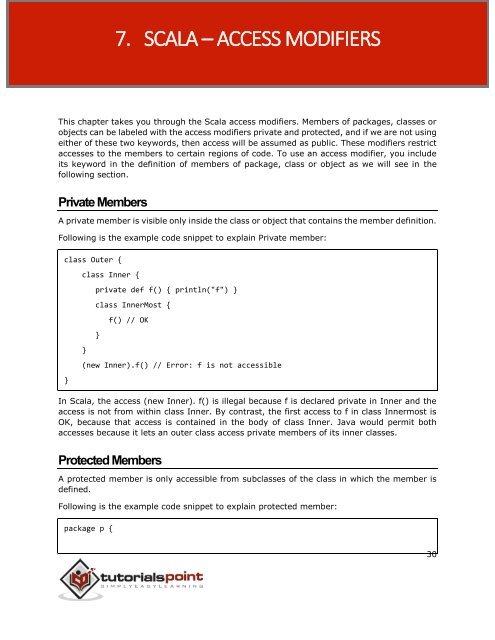You also want an ePaper? Increase the reach of your titles
YUMPU automatically turns print PDFs into web optimized ePapers that Google loves.
7. SCALA – ACCESS MODIFIERS<br />
Scala<br />
This chapter takes you through the Scala access modifiers. Members of packages, classes or<br />
objects can be labeled with the access modifiers private and protected, and if we are not using<br />
either of these two keywords, then access will be assumed as public. These modifiers restrict<br />
accesses to the members to certain regions of code. To use an access modifier, you include<br />
its keyword in the definition of members of package, class or object as we will see in the<br />
following section.<br />
Private Members<br />
A private member is visible only inside the class or object that contains the member definition.<br />
Following is the example code snippet to explain Private member:<br />
class Outer {<br />
}<br />
class Inner {<br />
}<br />
private def f() { println("f") }<br />
class InnerMost {<br />
}<br />
f() // OK<br />
(new Inner).f() // Error: f is not accessible<br />
In Scala, the access (new Inner). f() is illegal because f is declared private in Inner and the<br />
access is not from within class Inner. By contrast, the first access to f in class Innermost is<br />
OK, because that access is contained in the body of class Inner. Java would permit both<br />
accesses because it lets an outer class access private members of its inner classes.<br />
Protected Members<br />
A protected member is only accessible from subclasses of the class in which the member is<br />
defined.<br />
Following is the example code snippet to explain protected member:<br />
package p {<br />
30


